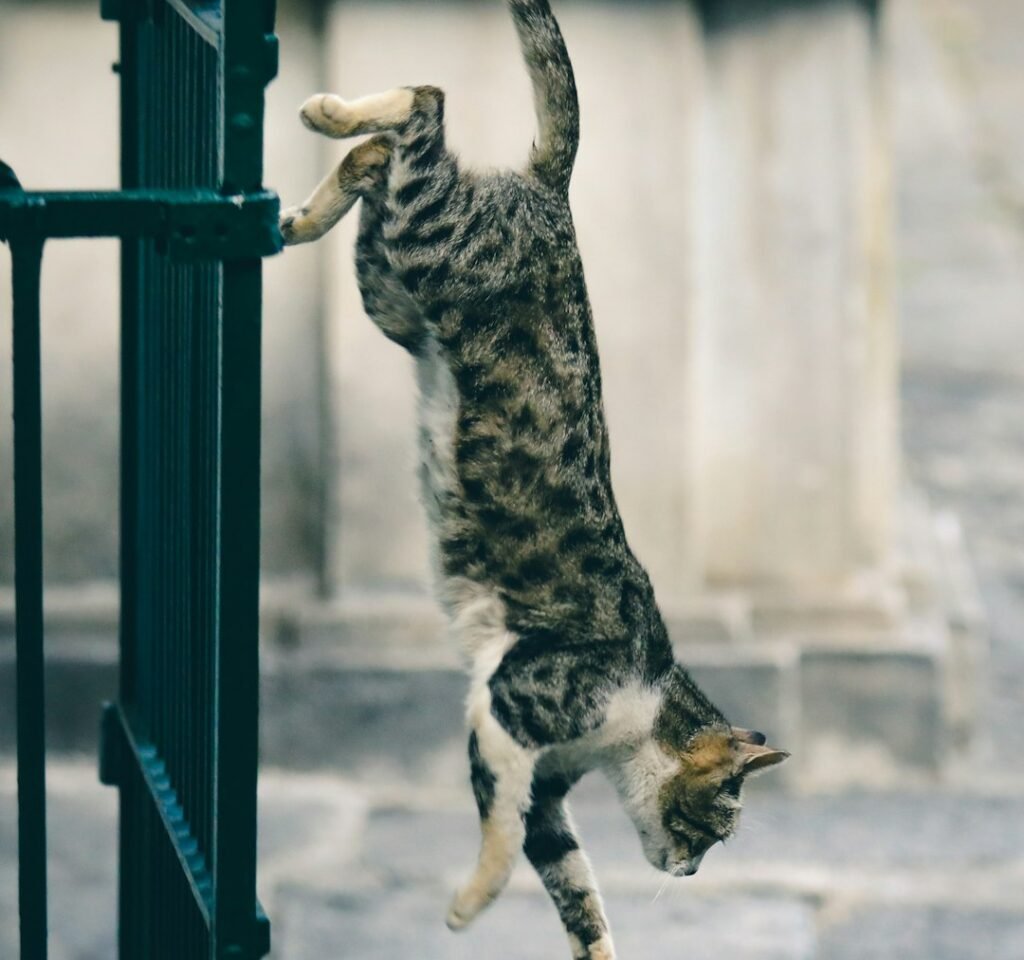You’ve probably heard someone say that cats have nine lives, especially when your feline friend narrowly escapes what could have been a dangerous situation. Perhaps you’ve watched your cat tumble from a bookshelf only to land gracefully on their paws, making you wonder if there’s some truth to this ancient saying. This enduring myth has captivated people across cultures for centuries, weaving itself into our collective understanding of these remarkable creatures.
The belief persists because cats seem to possess an almost supernatural ability to survive situations that might prove fatal to other animals. You’ll find variations of this concept around the world, though the exact number of lives varies by culture. So let’s dive into the fascinating origins of this legend and discover what science reveals about our feline companions’ remarkable survival skills.
The Ancient Egyptian Origins of Feline Immortality

The myth that cats have nine lives most likely originated in ancient Egypt, where these creatures held sacred status. Cats were revered as divine creatures and often associated with the goddess Bastet, who was believed to have protective powers. The mythological Egyptian god Atum was considered to represent nine lives – his own and the eight other original gods and goddesses of Egypt that were his descendants.
The sun god Atum-Ra was said to take the form of a cat so he could visit the underworld. Arabic legends claim cats were bestowed with multiple lives as a gift from the gods, recognizing their spirit and abilities. This divine connection helps explain why ancient civilizations viewed cats as possessing otherworldly powers that enabled them to cheat death repeatedly.
Why Nine? The Magic Number Across Cultures

Ancient Egyptian, Chinese and Greek belief systems considered nine to be a magical number. In various cultures, the number nine is often seen as special, representing total perfection or deep magical meaning. The choice wasn’t arbitrary but reflected deeper spiritual beliefs about completeness and divine protection.
In the Bible, nine was used 49 times and stands for completion. Christ died on the ninth hour of the day. Or maybe because it comes from the Welsh, where nine steps was used to measure legal distances. However, not everyone agrees on nine lives. Other cultures believe cats have multiple lives, but the number isn’t always nine. Some Spanish-speaking areas believe cats have seven lives, while Arabic and Turkish mythology give cats six lives.
Literary References That Shaped the Myth

William Shakespeare also references nine lives in his 1597 tragedy Romeo and Juliet, appearing in Act 3, Scene 1 during a fight between Tybalt and Mercutio. This theatrical mention helped cement the phrase in English literature and popular culture. An old English proverb of unknown origin directly references the idea of cats having nine lives. It says: “A cat has nine lives. For three he plays, for three he strays, and for the last three he stays.”
In Romeo and Juliet, Mercutio calls Tybalt “good king of cats” and threatens to take one of his “nine lives.” More than a century later, writer Thomas Fuller referenced the saying in his 1732 book, “Gnomologia.” These literary references demonstrate how deeply embedded this belief became in Western culture, passed down through generations of storytelling and theater.
The Science Behind Their Incredible Survival Skills

The cat righting reflex is a cat’s innate ability to orient itself as it falls in order to land on its feet. The righting reflex begins to appear at 3–4 weeks of age, and is perfected at 6–9 weeks. This remarkable ability stems from their unique anatomy and neurological system working in perfect harmony.
Cats are able to do this because they have an unusually flexible backbone and no functional clavicle (collarbone). This “if I fits, I sits” ability is thanks to their elastic spines and unique clavicles that are attached to muscle instead of bone. Their inner ear contains specialized balance sensors that constantly monitor body position, allowing them to make lightning-fast adjustments during a fall.
Modern Research Reveals the Truth About Feline Mortality

Despite their legendary survival abilities, modern veterinary studies paint a more realistic picture of feline longevity. Recent studies show cats typically live 12-16 years on average, with indoor cats living significantly longer than outdoor cats. Overall, the median longevity was 14.0 years with interquartile range 9.0-17.0. These statistics come from comprehensive studies involving millions of cats across veterinary practices.
Cancer was the most common pathophysiologic cause of death (35.81%) and was identified in 41.3% of cats. The most frequently attributed causes of mortality in cats of all ages were trauma (12.2%), renal disorder (12.1%), non-specific illness (11.2%), neoplasia (10.8%) and mass lesion disorders (10.2%). These findings show that cats face the same mortality risks as any other living creature.
The Physics of Falling: How Cats Actually Land on Their Feet

As a cat starts to fall and senses disorientation, the back bends, creating two separate axes of rotation. The head and front half of the body rotates first in one direction, and the front legs tuck in close to the face as the front part of the body twists toward the ground. Simultaneously, the back half separately rotates with the back legs outstretched, creating less rotation than the front half.
An average-sized cat with its limbs extended achieves a terminal velocity of about 60 mph (97 km/h), around half that of an average-sized man, who reaches a terminal velocity of about 120 mph (190 km/h). Their small size, light bone structure, and thick fur decrease their terminal velocity. While falling, a cat spreads out its body to increase drag. However, this doesn’t make them invincible to injuries from falls.
Debunking the Myth While Celebrating Reality

Despite popular belief, cats actually have just one life. Obviously, the saying that cats have nine lives is a myth. Cats, like all other animals, have only one life. The persistence of this belief stems from our fascination with their remarkable abilities and the countless stories of cats surviving seemingly impossible situations.
There are countless stories of cats who’ve fallen from high-rise buildings, survived being stuck in car engines, or made it home after being lost for months or even years. These stories fuel the myth because cats just keep proving how amazing they are. While these survival stories are impressive, they represent exceptional cases rather than proof of supernatural abilities.
What makes cats truly remarkable isn’t mythical extra lives, but their evolutionary adaptations that enhance survival. Their flexible spines, keen reflexes, and cautious nature do give them advantages in dangerous situations. Yet despite these impressive abilities, cats remain vulnerable to the same health challenges and accidents that affect all living creatures.
The nine lives myth reflects our deep admiration for cats and their seemingly magical ability to escape danger. While we now know the science behind their survival skills, the legend continues to capture our imagination and reminds us why these extraordinary animals have held such a special place in human culture for thousands of years. What do you think about this legendary myth? Tell us in the comments.





